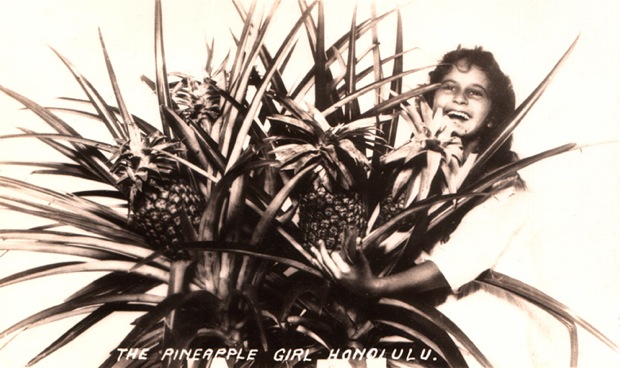
Let’s get one thing straight, people: The pineapple is not a toy. Just look at this description of the pineapple plant’s foliage:
“The long, pointed leaves are 20-72 in. in length, usually needle-tipped and generally bearing sharp, upcurved spines on the margins.”
That’s not a fruit, that’s a weapon! Yet look how blithely The Pineapple Girl holds her spiky namesake. Oblivious to the hazards, she beams at the camera, not realizing that one of those pointed, needle-tipped, sharp spines is about to puncture her cornea.
But that’s not all…
Toxicity
Workers who cut up pineapples have their fingerprints almost completely obliterated by pressure and the keratolytic effect of bromelain (calcium oxalate crystals and citric acid were excluded as the cause).
The recurved hooks on the left margins can painfully injure one.
Mitchell and Rook (1979) also restated earlier work on “pineapple estate pyosis” occurring in workers who gather the fruits, probably an acarus infestation with secondary bacterial infection.
Angular stomatitis can result from eating the fruit.
Ethyl acrylate, found in the fruits, produced sensitisation in 10 of 24 subjects “by a maximisation test.” Ethyl acrylate is used in creams, detergents, food, lotions, perfumes, and soaps.
In “therapeutic doses”, bromelain may cause nausea, vomiting, diarrhea, skin rash, and menorrhagia. Watt and Breyer-Brandwijk (1969-1979) restate a report, unavailable to me, of unusual toxic symptoms following ingestion of the fruit, heart failure with cyanosis and ecchymoses, followed by collapse and coma and sometimes death (Duke, 1984b).
Purdue University
Center for New Crops & Plant Products
So, Pineapple Upside-Down Cake: “Topsy-Turvy Treat” or “Dessert of Death?”